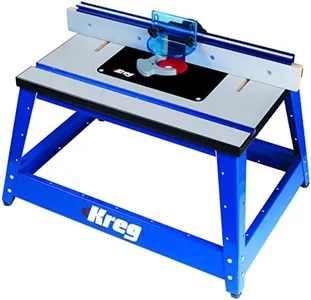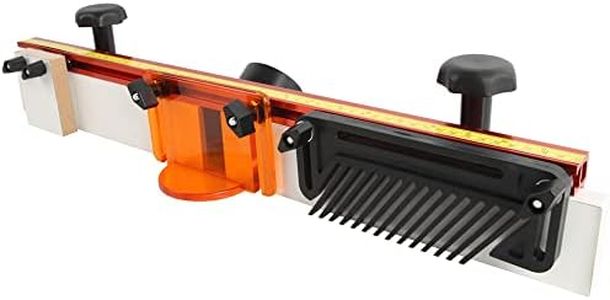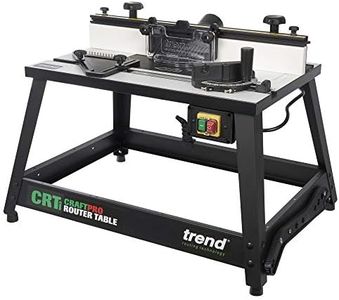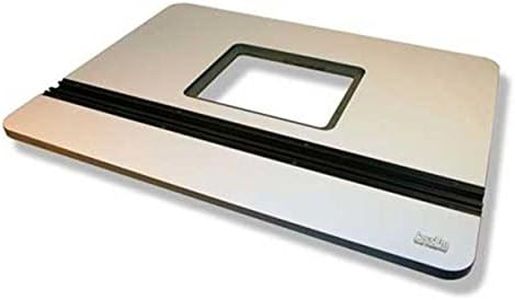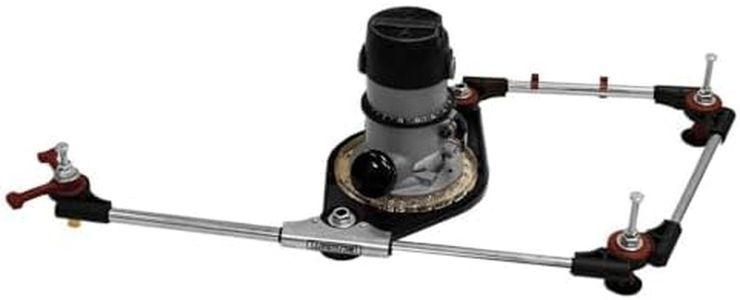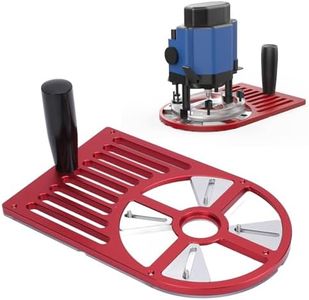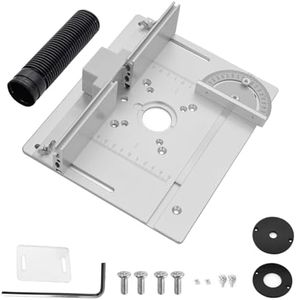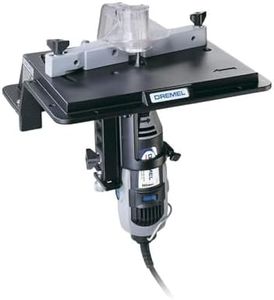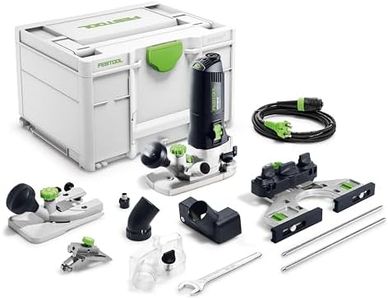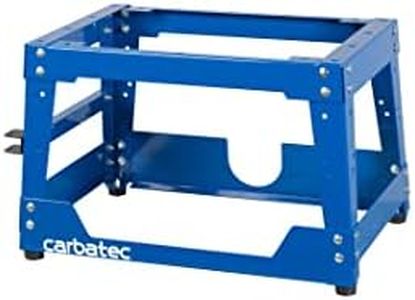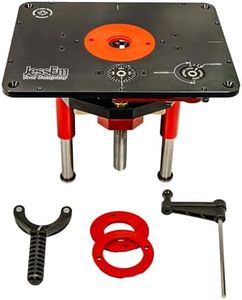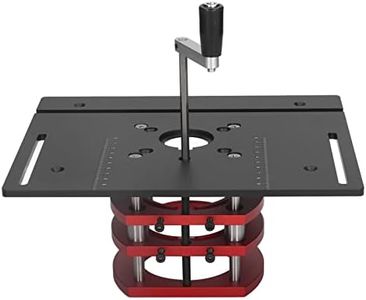We Use CookiesWe use cookies to enhance the security, performance,
functionality and for analytical and promotional activities. By continuing to browse this site you
are agreeing to our privacy policy
10 Best Router Tables
From leading brands and best sellers available on the web.Buying Guide for the Best Router Tables
Choosing the right router table can make woodworking projects safer, easier, and more precise. A router table allows you to use your router in a stationary position, improving accuracy in routing grooves, edges, and patterns. The best fit depends on your workspace, intended projects, and the router you already have or plan to buy. Understanding the main features of router tables will help you decide which one matches your needs and skills.Table SizeThe size of the router table determines how much workspace you have for handling materials and making cuts. A larger table provides more support and stability for bigger workpieces, which is ideal if you plan to work on large cabinetry panels or furniture parts. Smaller tables are more portable and fit well in limited spaces but may feel restrictive when routing long or wide boards. Choose table size based on the typical size of projects you intend to tackle and the space you have in your workshop.
Material and ConstructionRouter tables are commonly made from MDF, steel, aluminum, or phenolic resin, each offering different levels of durability and flatness. A solid, flat surface is crucial because it keeps your cuts even and safe. Metal tables, especially with aluminum tops, resist warping and can last longer, while MDF is affordable and less likely to dull router bits. Consider how often you'll use the table and whether you'll need a portable table or a more permanent, sturdy setup.
Fence SystemA fence on a router table helps guide your workpiece consistently past the router bit. Key qualities of a good fence are its adjustability, alignment, and stability. Simple fences are fixed and easier to use for beginners, while more advanced fences can be micro-adjusted for precise work. If you’ll be making the same types of cuts regularly, a sturdy, straight fence that’s easy to set up will save you time and effort. Choose a fence system based on the complexity and precision of routing you plan to do.
Insert Plate CompatibilityThe insert plate is the part of the table where your router attaches and is a critical factor for both compatibility and performance. Ideally, it should be flat, rigid, and adaptable to fit your router model securely. Some router tables come with universal plates that fit many routers, while others require purchasing a specific plate for your router. Make sure your router is well-supported by the plate to keep operations safe and accurate. If you use multiple routers or plan to upgrade, choose a table known for broad plate compatibility.
Dust Collection PortRouting creates a lot of wood dust, so having a dust collection port helps keep your workspace cleaner and safer. Ports usually attach to shop vacuums or dust extractors, and their effectiveness depends on size and placement. A larger or adjustable port generally works better for extracting dust from different projects. If you value a clean workspace or have respiratory sensitivities, prioritize tables with efficient dust collection systems.
Stability and SupportA router table needs to be steady during use so vibrations or movement don’t affect your work. Look for tables with strong legs, a robust base, and enough weight to stay put while routing. Portable tables can be more prone to movement, while larger, heavier models offer more stability. Consider how often you'll move the table versus leaving it in one place, as well as the degree of stability needed for the types of cuts you plan to make.
